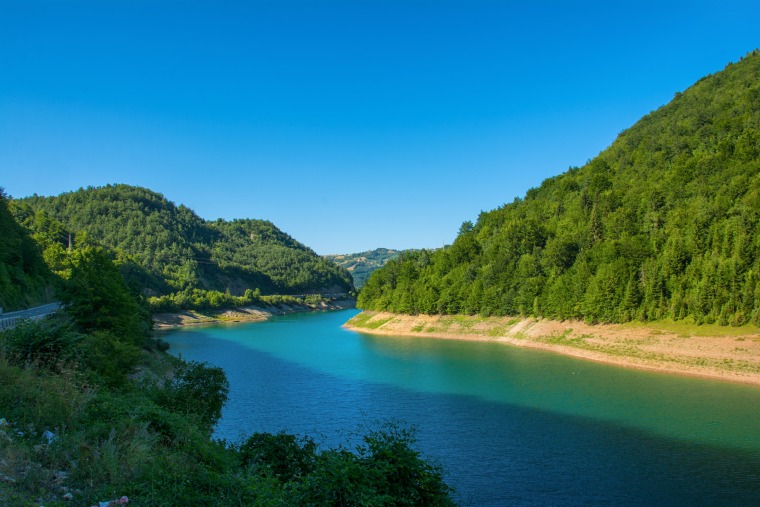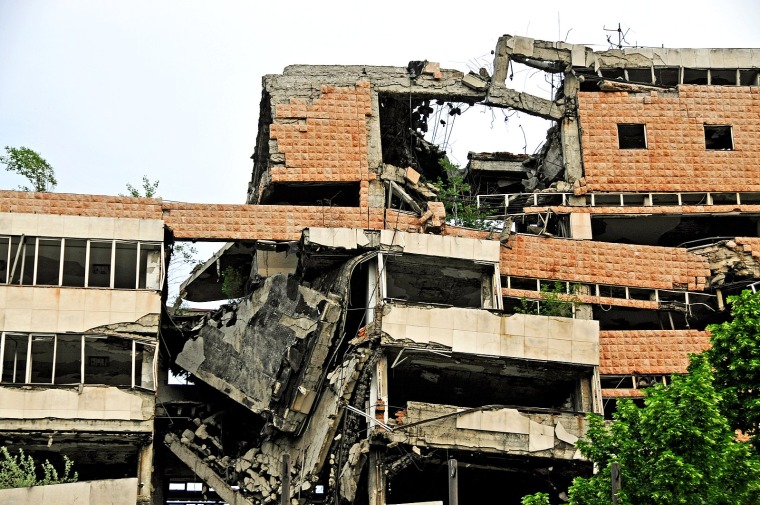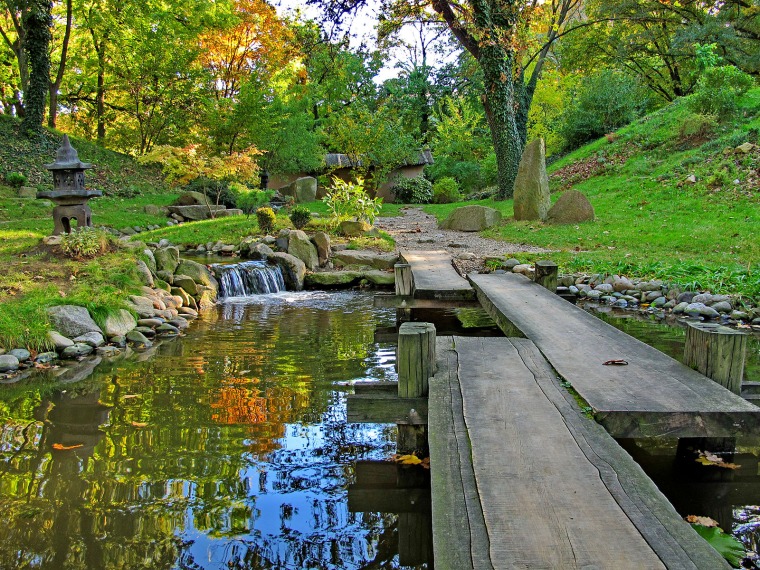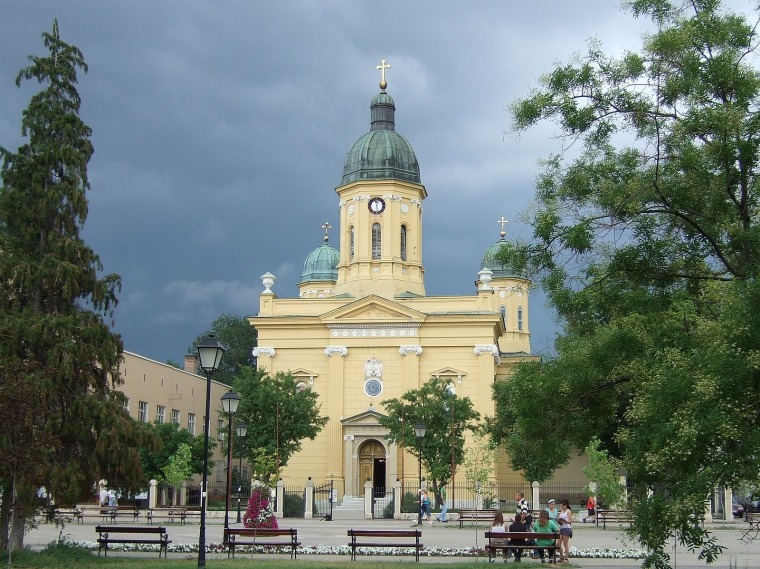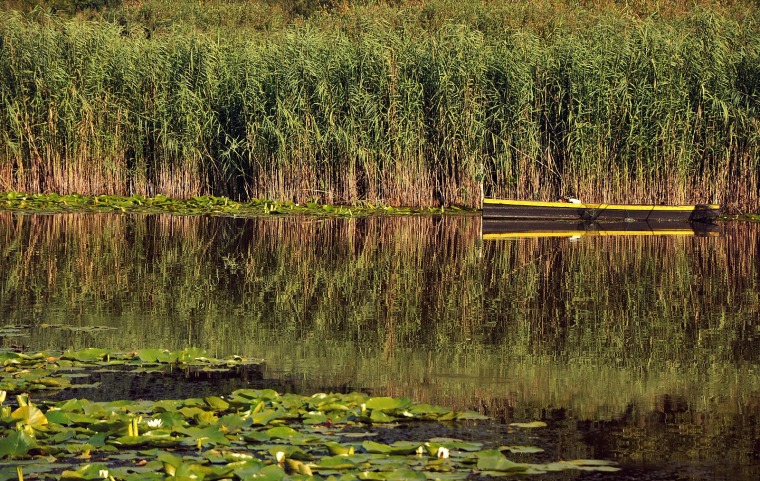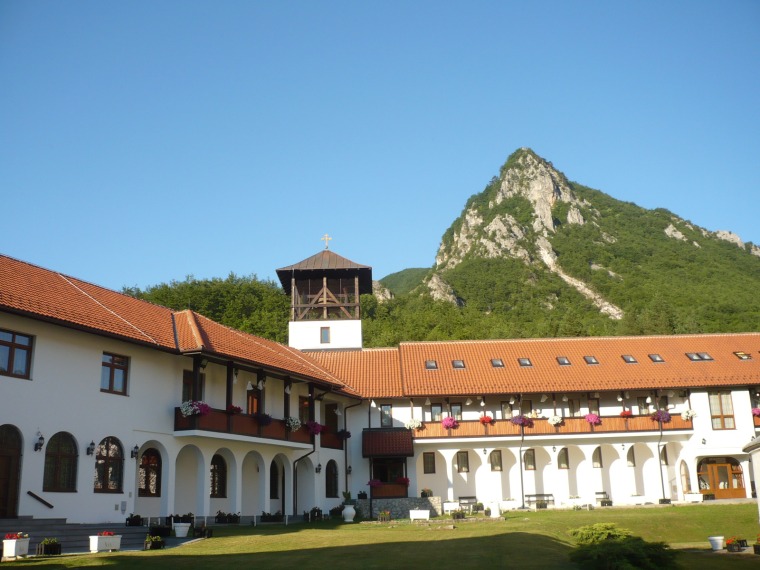
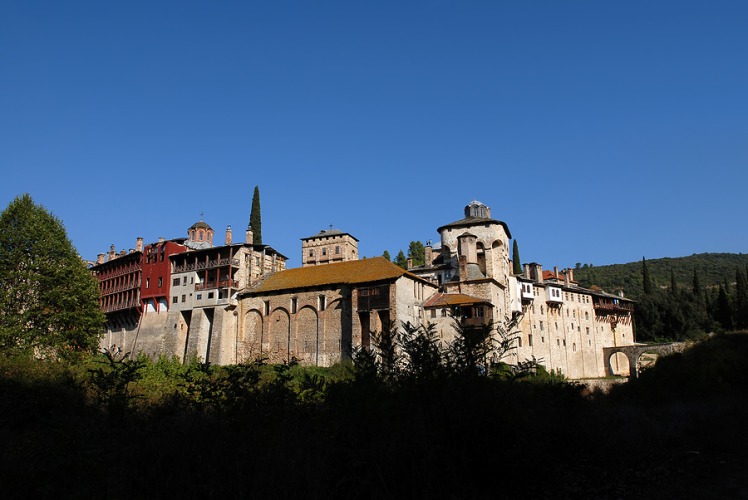
The Hilandar monastery, where the richest treasury of Serbian medieval culture is kept, is the religious center of Serbian people
In the north of Mt. Athos, the state of Orthodox monks and self-governed state for over thousand years, lies the Serbian Hilandar monastery, which name represents a type of a Byzantine ship. For over 800 years no woman set foot in this monastery.
The Holy Mountain is located at Mt. Athos, the third peninsula of Halkidiki in northern Greece, and the Hilandar is set 2,5 kilometers from the coast. The monastery was built on the ruins of Greek monastery by the founder of Serbian medieval dynasty Stefan Nemanja and his son Rastko, the founder of autocephalous Serbian Orthodox church.
Opposing his father’s will, Rastko took monastic vows in the Greek monastery Vatopedi at Mt. Athos. Nemanja joined his son in monastic life after he abdicated.
The father and son decided to found the monastery at the Holy Mountain, which is believed to be Virgin’s garden where no woman is allowed. This tradition has been obeyed for over eight centuries.
Nemanja, who now took the name Simeon, and Rastko, now Sava, wanted to transform the old and abandoned Byzantine monastery Helandarion from the 11th century into a refuge for Serbian monks. Parts of this old monastery, the tower of St. George and outer defensive walls to the south and the west, still can be seen on southwestern side of the Hilandar.
In order to realize this idea, Sava headed for Constantinople to get the permission of the Byzantine emperor Alexios III Angelos and soon the authority of the Holy Mountain asked the emperor to cede the abandoned Hilandar to Serbian monks. The emperor accepted the proposition and gave the monastery absolute authority and self-governance.
In the meanwhile, Sava got the new charter from the Byzantine emperor which gave the same rights given to all other monasteries in Mt. Athos also to the Hilandar. At the same time they were given in possession one destroyed monastery Zig at Halkidiki.
Simeon and Sava rebuilt the monastery and dedicated it to Presentation of Virgin. Since the beginning of the 13th century it has been the intellectual and religious center of Serbs. Nemanja died in the Hilandar monastery in 1200 and he was buried to the northeast of the main temple. According to a legend, a prolific “miracle vine” is growing from his tomb.
From outside, the Hilandar looks like a medieval fortress, as it is surrounded by 30 meters tall fortifications and outer walls are 140 meters long. Today’s main monastery church “the Presentation of Virgin” was built by King Milutin at the beginning of the 14th century on the foundations of the old church built by Nemanja and Sava. There are also another 12 smaller churches and chapels decorated with frescoes from different epochs.
The richest collection of original old manuscripts, around 500 of them, created between the 12th and the 19th century, and numerous frescos are treasured in the Hilandar. Today it is the most significant treasury of Serbian medieval culture.
A large number of manuscripts and miniatures from the 13th century, as well as the rich collection of Serbian charters are kept in the monastery library. The Karyes Typicon written by St. Sava in 1199 is also kept here. It is the oldest document with Sava’s signature and seal kept in the monastery.
The Hilandar is one of the most significant centers of Serbian culture and spirituality. Over centuries, being relatively protected from attacks and looting, it has been spared the destiny of almost every other Serbian monastery.
On March 4, 2004, there was a devastating fire at the Hilandar monastery. The reconstruction efforts are underway. Since 1988 the monastery has been enlisted to UNESCO World Heritage List with another 19 monasteries from Mt. Athos, within the Mt. Athos complex of medieval monuments.

